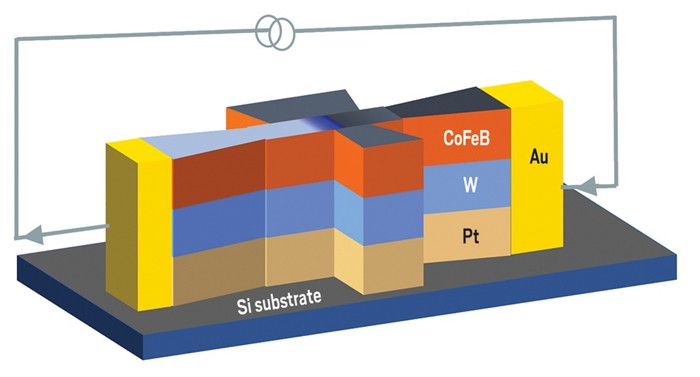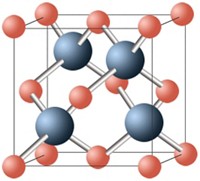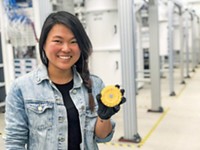Advertisement
Grab your lab coat. Let's get started
Welcome!
Welcome!
Create an account below to get 6 C&EN articles per month, receive newsletters and more - all free.
It seems this is your first time logging in online. Please enter the following information to continue.
As an ACS member you automatically get access to this site. All we need is few more details to create your reading experience.
Not you? Sign in with a different account.
Not you? Sign in with a different account.
ERROR 1
ERROR 1
ERROR 2
ERROR 2
ERROR 2
ERROR 2
ERROR 2
Password and Confirm password must match.
If you have an ACS member number, please enter it here so we can link this account to your membership. (optional)
ERROR 2
ACS values your privacy. By submitting your information, you are gaining access to C&EN and subscribing to our weekly newsletter. We use the information you provide to make your reading experience better, and we will never sell your data to third party members.
Electronic Materials
Weird magnetic behavior could improve computer memory
Findings suggest ways to build low-power memory devices
by Katherine Bourzac, special to C&EN
March 30, 2018
| A version of this story appeared in
Volume 96, Issue 14

A surprising, theory-defying effect observed in magnetic devices could lead to efficient, low-power forms of computer memory, according to a new study (Phys. Rev. Lett. 2018, DOI: 10.1103/PhysRevLett.120.117703).
For decades, applied physicists and semiconductor companies have developed computer memory that uses the direction of a magnetic field to store data. A magnetic pulse or a jolt of electricity can change the properties of an island of magnetic material, flipping its field up or down to represent a 1 or a 0. The primary advantage of this so-called magnetoresistive random access memory (MRAM) is its durability. “Once the data are recorded, you can pull the plug, and nothing will be lost,” says Johns Hopkins University physicist Chia-Ling Chien.
Early versions of MRAM used magnetic fields to flip the bits, so each bit had to be far from its neighbors to prevent the applied field from modifying those nearby bits. As a result, this low-density yet highly durable memory found only niche applications. A new generation of MRAM uses electrical current to write data and offers greater storage density. Companies such as Samsung intend to use it to make computer chips that save energy by bringing memory and logic circuits closer together.
Chien and other researchers want to improve MRAM by developing memory that can be written using smaller pulses of current. This would reduce power requirements and improve the lifetime of the memory arrays.
To develop this new form of MRAM, Chien and others are exploring a different bit-switching mechanism that takes advantage of an effect called spin-orbit torque. Chien’s group was working with an experimental device made up of nanometer-thin layers of a cobalt-iron-boron ferromagnet, a metal oxide, and tungsten held between a pair of gold electrodes. The researchers could flip the polarization of the CoFeB magnet by applying current through the electrodes, but only in the presence of a magnetic field. The tungsten layer acts as a kind of electron filter, allowing in only electrons with a particular spin. The momentum of that spin gets transferred to the magnet and flips the field.
While studying this device, Chien’s team found something weird. They wanted to see what happened when they broke one of the memory devices. They added a layer of platinum under the tungsten, expecting it would cancel out the spin-switching effect. “Anyone who understands spin-orbit torque will realize this is a stupid thing to do, because tungsten and platinum have opposite spin currents,” Chien says.
But the device didn’t stop working. Instead, the team found they could switch the platinum-frosted device simply by applying an electrical current—no magnetic field required. This simplification means such devices should be less complicated to build and operate. The Johns Hopkins group collaborated with researchers at the National Institute of Standards & Technology to image and verify the switching effects, but the researchers still don’t understand why it works. Chien suspects that existing theoretical models of spin-orbit torque need updating to explain this phenomenon.
Advertisement
The findings have surprised other applied physicists and MRAM researchers. The combination of platinum and tungsten should lead to detrimental results, says Shunsuke Fukami, a nanoelectronics researcher at Tohoku University. “I have no idea how to interpret this result, and I hope some theoretical studies will be performed in the future to explain it,” he says.
Jonathan Sun, an applied physicist developing MRAM technology at IBM’s Thomas J. Watson Research Center, says it’s not uncommon for researchers studying novel magnetic switching mechanisms to uncover weird effects. “It’s the nature of the field at the moment—there’s a lot of complexity in these atomic layer arrangements,” he says. With a better understanding of the underlying physics, researchers could someday build more efficient MRAM technologies.





Join the conversation
Contact the reporter
Submit a Letter to the Editor for publication
Engage with us on Twitter